Empty dropdown
Notes:Data is as of 30 September 2023. Full year extrapolated based on year to date data. Excludes the following: biotech, secondary transactions, debt, lending capital, and grants.
While this is significantly less than the $82 billion raised in 2022, it’s still the third-highest year on record.
When asked the same simple question - what do founders really want from their VCs - the answers from founders and VCs are surprisingly divergent. For founders, what really matters is finding a VC that truly 'gets them'.
After five years, US tech startups are 40% more likely to have secured venture capital funding than their European counterparts. That’s despite the fact that after securing an initial Seed round, a company’s chances of reaching a billion-dollar valuation are the same in Europe and the US.
Total capital invested into the European tech ecosystem in 2023 is on track to reach around $45B, starkly highlighting the impact on capital flows as a result of the shift in the broader macro landscape. This will be down more than half (55%) from the record year of 2021, when investment volumes surpassed the threshold of $100B for the first time.
This also represents a steep drop-off of 45% from 2022's total of $82B. The decline is not surprising given the dual effect of many later-stage companies delaying fundraising, as well as materially slower deployment pacing by investors, which have both served to drive the large decline in the prevalence of outsized, growth stage investment rounds - the biggest factor in the lower amounts of capital invested.
While the decline from the peak in 2021 is large, it's worth highlighting that 2023 is on track to be the third-largest year on record by total capital invested, and is on track to come in at four times the volume seen 10 years ago in 2014. In fact, the resetting of investment levels appears to reflect a correction to the long-term upwards trajectory, following two outlier years of overheated activity.

They need to look ahead, keeping up to date on the latest trends and technologies, whilst being customer centric and ensuring expectations are exceeded, including creating new products and services. Following these principles will help founders develop and scale at pace and position a company for success.
The decrease in investment since 2021 is mainly due to a slowdown at the growth stages. However, after a sharp drop right after the peak, there has been a stable total investment volume for the past five quarters.
There are two important things to note. First, early stage investment has stayed stable despite the turbulence in investment volume since 2021, reflecting the vibrancy of Europe's early stage startup scene. Second, if we exclude the overheated 18-month period from Q1 2021 to Q2 2022, we get a clearer view of the trajectory of consistent, long-term growth in investment in the European tech ecosystem.
Of course, the market reset isn't solely a European concern: it's a worldwide phenomenon with Europe facing the same downward trend in investment as every other region globally. There has been a notably consistent reduction in global private tech investment not only in Europe, but also in the US, China, and beyond.
However, zooming out a few years, Europe has continued on an upward trajectory and is on track to raise 18% more compared to 2020. We are the only region globally where long term growth has not flattened out. Meanwhile the US, China and Rest of World are on track to land on or below 2020 figures.

The impact of the market reset is visible in founder sentiment when asked about the change in fundraising conditions over the past 12 months. 80% of founder respondents to the survey say that it has become even harder to raise venture capital than last year, over the past year. Just 7% of respondents stated that conditions had eased.
It's worth noting that this year's responses suggest that fundraising conditions have deteriorated beyond what was already a challenging moment at the time of last year's survey. In other words, this year has been even harder than last year for 80% of respondents.
Looking at respondents from different demographics, underrepresented founders are having a relatively harder time. While the views of women and men founders are aligned, non-white founders report facing tougher barriers (87%) to fundraising compared to their white peers (79%).

Increased accessibility to information has inspired many over the last decade to embark on ‘starting up’. Empowered by a culture of experience sharing, entrepreneurial awakenings are happening all over. This information evolution has contributed to a burgeoning diversity in seed-stage excellence. The transformative impact of COVID-19 has underscored a need for adaptability. Combined with a post George Floyd era, a paradigm shift has begun to take place. Under representation was collectively challenged, allowing for a greater endorsement of black talent in entrepreneurship, an increased focus on female representation within founding teams and a wider acknowledgment that diverse teams out perform their non diverse counterparts. Diversification within teams allows for greater capacity to adapt. However to sustain and build upon this trajectory, continued targeted efforts must be made to further dismantle systemic biases and promote inclusivity. The entrepreneurial ecosystem’s commitment to widening the funnel isn't just an ethical imperative but a strategic advantage for the entire startup landscape.
As highlighted in the 'First Look' midyear update to the State of European Tech, a consequence of a very different exit landscape has been a huge decrease in - and in some cases a complete withdrawal from - activity by so-called 'crossover investors.' The retreat of these funds that actively invest across both the public and private markets has been a major factor in the slowdown of late-stage and large-round investment activity.
In 2022, the volume of new investment activity had already started to slow dramatically, especially during the second half of the year. This year, investment activity has effectively ground to a halt, with just four new investments announced publicly so far. Interestingly, this slowdown is visible across both large rounds of more than $100M and smaller rounds.
The number of unique investors actively deploying into European tech companies has risen consistently over the past decade, unsurprisingly spiking during the peak period of 2021 and the first half of 2022. This period was characterised by a significant ramp in the number of investors from outside the region deploying into Europe, growing especially quickly from North America.
While the full-year numbers for 2023 will end up higher than the year-to-date numbers shown in the chart, the reset in the market has seen the number of active investors retreat, driven by a significantly reduced level of participation from non-European investors.
But despite the slowdown in 2023, and even without taking into account full-year numbers, the base of active investors is still more than double the level of just a decade ago.
This commitment to embrace the perceived risk of investing through market cycles is a critical foundation to ensure the European tech ecosystem continues to benefit from a significant and stable base of local investors.
The slowdown in investment activity is reflected in a decreased count of disclosed investment rounds. Looking at the investment activity across the last ten years, 2021 and 2022 are standout years, while 2023 is on track to land in line with prior years.
The category of rounds involving investment amounts of $5M or less continue to represent the overwhelming majority of all activity, equating to 73% of all rounds in 2023.
It should be noted, however, that this category is most impacted by the so-called reporting lag, which results in early stage investment rounds being systematically unpublicised for an extended period of time until reporting catches up to subsequent data disclosures.
This reporting lag notwithstanding, it's notable that sub-$5M rounds account have been shrinking as a proportion of total investment rounds raised in Europe each year. Over the past three years, $5M+ rounds have accounted for around one-quarter (24-27%) of all activity each year. A decade ago in 2014, that share stood at just over one-tenth (11%).
The combination of the withdrawal of crossover investors and the general slowdown in late-stage investment activity is unsurprisingly reflected in a huge decline in the number of so-called mega-rounds, meaning round sizes of $100M or more. In the peak of 2021, there were almost 200 rounds of this magnitude, including more than 50 rounds greater than $250M.
While this number declined slightly in 2022 to 163 rounds of $100M or more (of which 38 were greater than $250M), the first nine months of 2023 saw a far more significant decrease. In the first nine months of 2023 to date, there have been 36 rounds of $100M or more, of which only seven have been sized in excess of $250M.
Predictably, a reduction in growth stage funding round volume and a major reset in the valuation environment has led to a huge drop in the number of companies surpassing the billion-dollar valuation milestone for the first time in 2023.
2023 is on track to see the lowest number of new $B+ companies emerge from Europe in the last decade, with just seven as of the publication deadline at the end of October 2023. This is, of course, in stark contrast to 2021's record-breaking total when 108 new companies hit a billion-dollar valuation.
In last year's report we first introduced the concept of de-horned unicorns, $B+ companies whose valuation has dropped below this milestone since first hitting it. In 2022, we mapped 58 dehorned unicorns. This year, that number has reduced slightly, with 50, meaning some companies have seen their valuation lifted back up above the billion-dollar level in 2023. For clarity, when referring to $B+ companies, we have in mind tech companies that command that valuation today.
Over the five-year period between 2018 and 2022, a total of 257 European tech companies first surpassed the milestone of reaching a billion-dollar valuation, including more than 150 in 2021 and 2022 alone during the most heated period of the market.
This chart seeks to explore the extent to which these valuations have endured as this cohort of companies has gone on to raise subsequent rounds of investment since first achieving a billion-dollar valuation and, if they have, whether those rounds were raised at higher or lower valuations. Of course, this analysis is limited to publicly-disclosed data, but is still directionally helpful to understand the trend.
As is clearly visible in the data, a large number of billion-dollar companies - particularly those that first surpassed the milestone in 2021 or 2022 - have yet to disclose additional funding rounds. While many companies may keep their valuations intact, it seems likely that there is still a meaningful number of others, particularly from the classes of 2021 and 2022, that may face a correction when next seeking to raise capital.
In this year's survey, we asked founders to share their specific experiences in attempting to raise their most recent rounds of investment.
The responses make for tough reading. The vast majority of founders highlighted the impact of challenging fundraising conditions on most aspects of their process. The most notable impacts cited were extended process timelines, the need to adjust valuation expectations down, and having to reduce round sizes or take more dilution than hoped.
That being said, there's always a small number of founders and companies that are able to successfully navigate challenging market conditions to negotiate with potential investors and command more favourable terms.

Aiven, like many growth companies, secured funding during favorable market conditions. Now everyone’s focus is on product, customers and execution. Once markets regain momentum, we’ll be in a great position. As economist and investor Benjamin Graham put it: “In the short run, the market is a voting machine but in the long run, it is a weighing machine.”
While there has been much discussion about a potential extension of the average time between investment rounds as founders seek to delay returning to the market to raise additional capital, this hypothesis is yet to be reflected in publicly-disclosed data.
This is likely due to the fact that companies that have had to elongate the time between their funding rounds have yet to come back to the market to raise capital in sufficient volume to impact the overall numbers. The companies that have had difficulty closing new rounds of investment or are simply waiting things out are, of course, not captured in the data.
As of Q3 2023, the median time between rounds for growth stage companies has remained largely unchanged throughout the five-year reporting period, clocking in at an average of 23 months between consecutive rounds.
For early stage companies, meanwhile, only a slight uptick in the median interval between investment rounds is visible in the data.
In last year’s State of European Tech report, a clear uptick in bridge rounds was already becoming evident by Q2 2022. Today, that uptick has developed into a clear trend, with 2023 seeing the highest share of bridge rounds across all stages globally since 2019.
Bridge rounds are more common at the earliest stages of a startup's fundraising journey, when they serve to buy more time to find product-market fit. This is also reflected in the data, with Seed stage (38%) and Series A (39%) seeing the highest share of extension rounds in 2023, as well as in previous years.
The relatively high share of bridge rounds in the later stages underscores uncertainty in the market, as founders look to reinforce balance sheets and boost cash runways.
While the levels of venture debt funding have come down in absolute terms from the highs of 2021 and 2022, the decline in volumes is broadly aligned with overall equity investment volume trends in Europe over the same period.
In absolute terms, total debt financing raised by European tech companies is projected to reach around $1.5B in 2023, equating to around 3.4% of the total capital invested as equity over the same period. This marks a fall the peak of $4.4B in debt financing raised in 2021, but remains broadly in line with amounts raised in 2019 or 2020.
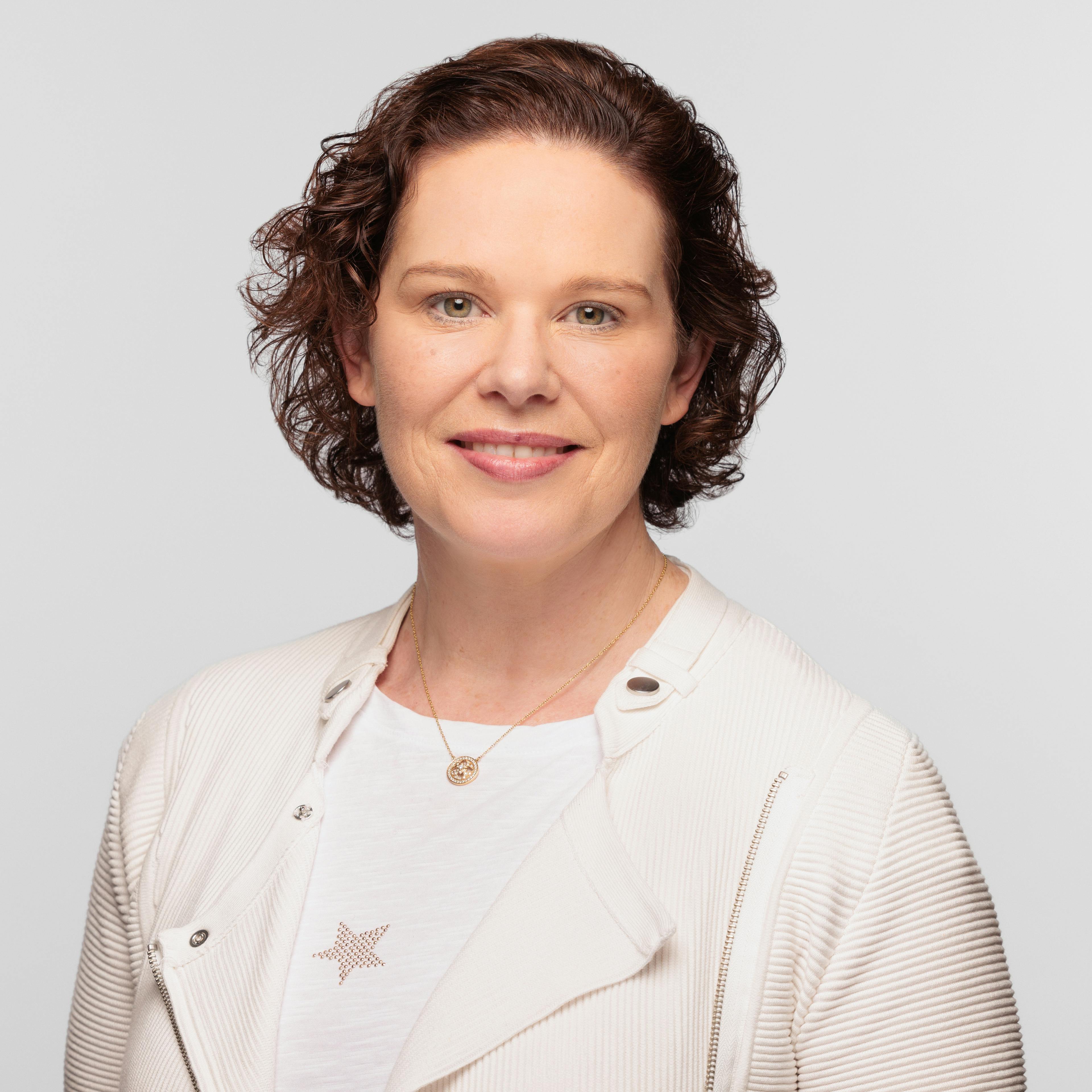
Firms have honed their focus on operational efficiencies and driving towards profitability. The imperative to do more with less has spurred boards to slim their top-line spend, reduce headcount where it is less impactful to RoI and become more innovative around workforce optimsation. At the same time, growth is still important and investing in the levers that deliver efficient growth, remains key to driving enterprise value. Put simply, each additional dollar of spend should account for incremental RoI. In essence, the challenging equity landscape has compelled innovation companies to streamline, innovate and strategically reposition themselves to thrive in an evolving financial environment.
A further impact of changing fundraising conditions is evident in the number of companies raising larger subsequent funding rounds. During the height of market in terms of capital availability in 2021, the share of rounds raised that were larger than prior rounds (up rounds) hit record highs.
For example, in the first half of 2022, before conditions in Europe shifted, more than 80% of all rounds raised by companies were at least 10% higher than the round of investment immediately-prior. By Q1 2023, this had fallen to just 65% of rounds, while in that same quarterly period, 27% of all rounds raised were actually at least 10% smaller than the preceding round.
This is not surprising given the change in capital availability and the cost of capital, which has meant that founders and companies have had to become increasingly open to raising smaller rounds - sometimes at lower valuations - even if those rounds don't provide the same cushion in terms of cash balance and runway that became commonplace during 2021 and 2022, when external capital was more readily available. By Q3 2023, the share of larger rounds was up at 77% again, but it is still too early to tell if this reversal is here to stay.
Unsurprisingly, capital investment volumes are also being shaped by changes in round sizes, and not just the absolute count of rounds taking place. At the later stage, following a reduction in the latter half of 2022, there are now observable signs of stabilisation in round size over the course of the past four quarters. As a consequence, round sizes are back in line with the longer-term, 5-10 year averages for the growth stages.
The trend at the earlier stages, however, is somewhat different. At Seed and Series A, median round sizes have also seen a period of stabilisation following rapid increases during 2020 and 2021, but remain elevated at levels significantly above 5-10 year averages.
For growth stage founders in particular, this inevitably translates to having to achieve more with less capital for an extended period of time, despite the ongoing inflationary pressures on wages that are keeping talent costs elevated.
The same trends are playing out across the ocean, where US Seed stage companies raise significantly larger rounds - roughly twice as large as their European counterparts. This delta starts narrowing as companies mature, disappearing by Series C.
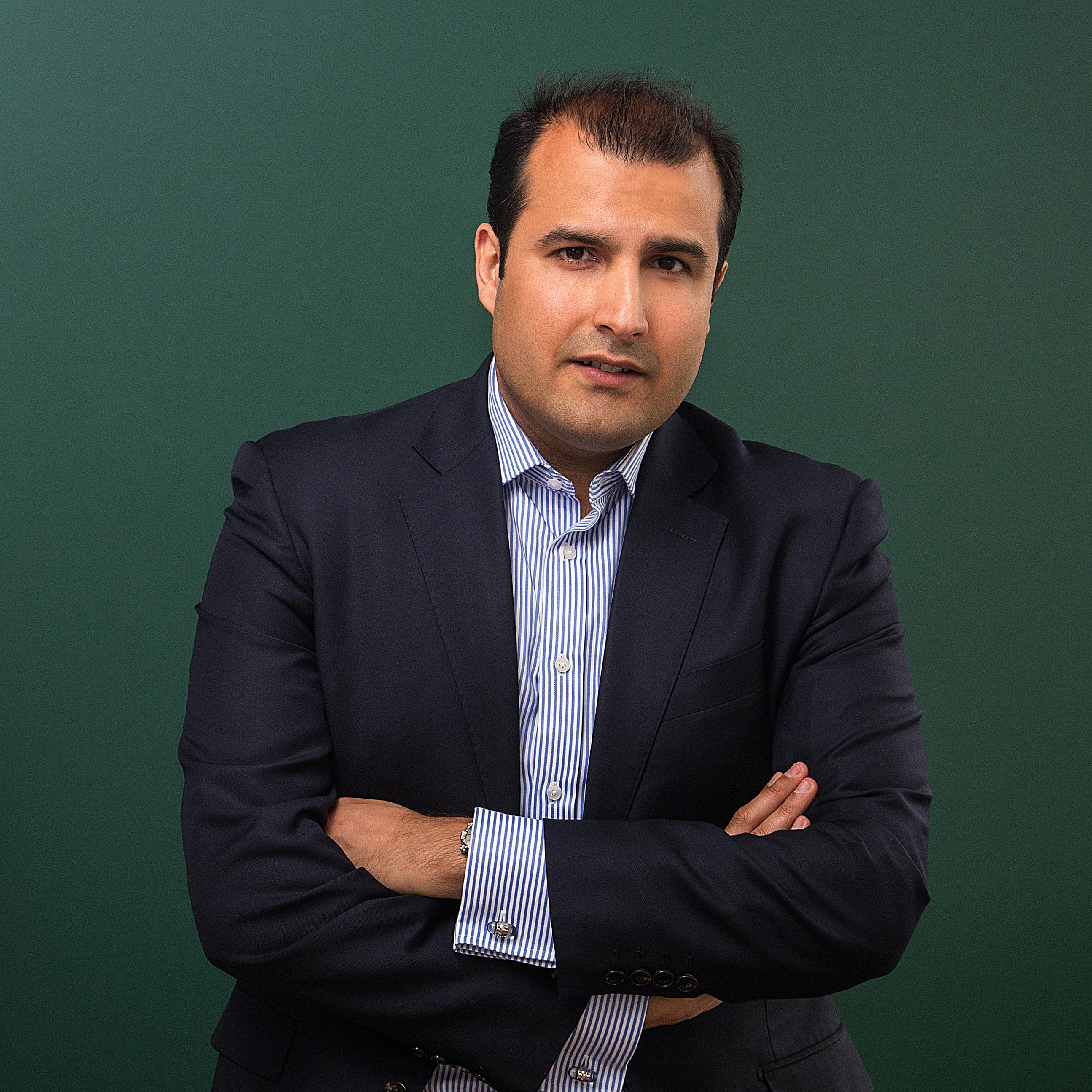
Raising cash is important. But to do so, you have to be prepared to walk away. What I mean by this is, as the entrepreneur, own the process, and don’t fall foul of investors trying to own that process. So, as you enter your Series A, B, C, D or E fundraise, think about what the optimum pack looks like. Remind yourself of your vision, the data you have, the product you have, how you stack up against the competition, and run with it. Ensure you have clear milestones and dates in mind. Or it’ll be easy to keep delaying things. And it’ll be easy to lose control. It’s also important to think about who is involved in these funding rounds – and how you work with them to strategically support your organisation on its growth journey. You all need to be working towards the same vision and the same end goal. But, the biggest piece of advice that I can give to any entrepreneur is that great conversations, are just great conversations. Remember, the signed term sheet is what counts. That’s a sign of something real. And it’ll help you to set expectations with both parties.
While down rounds have captured a large share of industry attention, the market reality captured in the data is that the vast majority of new rounds of investment raised in 2023 (74%) were completed at valuations that were higher than that of the preceding round.
In fact, despite a notable increase in the share of new rounds of investment raised at lower valuations to a company's prior round in 2023, these still remain in the minority, comprising 21% of all rounds this year.
Looking ahead to 2024, it is likely that this increased prevalence of down rounds will continue to be a characteristic of fundraising conditions, as more companies are forced to go back to market to raise capital and test valuations that haven't recalibrated since the change in market conditions.
Reflecting the multiple compression of the public markets, valuations in the private sphere are also returning to normalised pricing levels, once again framing 2021 as an exceptional year.
Valuations across stages in Europe are now hovering around 5- and 10-year long-term averages. The notable stage exception is Seed, where despite a levelling off of median Seed pre-money valuations in 2023, there has not yet been a correction to long-term pricing averages in the same way that has been evident at every stage from Series A and later.
This shift back toward longer-term averages in Europe mirrors what is happening in the US. Notably, however, median valuations in Europe continue to be 30-60% lower than in the US across all stages.
According to the majority of VC respondents to this year's survey, the intensity of competition for investment opportunities at their preferred stage of entry has either eased or stayed the same over the past 12 months. This represents an extension of the trend highlighted in last year's report that saw a dramatic reversal in competitive dynamics compared to the peak of the market in 2021.
This change in perception is not surprising given the large-scale withdrawal from the market of the most aggressive crossover investors and a slower overall pace of investment by other players.
It is also noteworthy that sentiment amongst this year's respondents was remarkably similar across VCs operating primarily at both early and growth stages. It should also be noted that while most respondents felt that competitive intensity had cooled, almost one third of respondents perceived an increase in competition compared to a year ago.

Our research reveals a similar story: 87% of European dealmakers foresee doing the same or more deals in 2024, but each deal requires 10 more hours of research than a year ago. It’s a time of cautious optimism.
As in previous years, we asked founders to share their biggest commercial, operational, and financial challenges, both looking back over the past 12 months and looking forward to the year ahead.
Looking back over the past 12 months, the top three most frequently cited challenges highlighted by founders were: securing access to capital (38% of founder respondents), securing new customers (37%), and managing longer sales conversion cycles (30%). Other frequently-cited challenges over the past year included finding product-market fit, building repeatable sales processes and managing cash burn.
Looking to the year ahead, most founders cited a similar set of expected challenges, led by securing new customers (44% of founder respondents), securing access to capital (41%), and building repeatable sales processes (27%).
By stage, founders of Seed stage companies are relatively more concerned with securing access to capital in the next year (+10% compared to overall) while Series A founders have burn rates on their mind (+16%). As is to be expected, founders at Series B stage and beyond aren't worried so much about finding product-market fit, but are most focused on minimising existing customer churn instead.
Turning the page over to founder demographic, women founders are relatively less worried about managing burn rates, mostly as a function of a high concentration of women founders in Angel and pre-Seed funded companies where companies are still in the early stages of product development.
The share of capital investment and rounds raised by women continues to see very slow progress. In 2023, just 7% of rounds raised were captured by all-women founding teams, up just two percentage points over the past five years. Similarly, just 18% of rounds raised this year to date were captured by companies with at least one woman founder or co-founder. This share has increased by only a single percentage point over a five-year period. This means that 75% of all rounds raised this year went to all-men founding teams.
In absolute terms, the numbers are even less positive. In 2023, all-women founding teams raised just 3% of all dollars invested in the year, with mixed gender founding teams taking 15%, leaving 82% of dollars to flow to founding teams that are all men. This number has increased by a single percentage point since 2019.

However, despite achieving record levels of investment in underrepresented founders in 2020, it remains a fraction of what is invested in white, cisgender men. Recent trends and discussions point to a troubling trend: a reduction in funding to these diverse groups, reflecting a persistent perception that they are riskier investments. Despite efforts to change these perceptions, the industry often reverts to traditional investment models during economic downturns. The Atomico First Look data report illustrates this setback, showing a decrease in the percentage of overall investment allocated to female founders compared to the previous year. This regression underscores a reluctance to embrace the undeniable economic wisdom that diversity in leadership leads to better business performance. We had hoped for a more solid transition from rhetoric to action, considering the long-term nature of venture capital investments. Unfortunately, the shift towards recognizing the tangible returns of diversity has been hampered by economic and political turbulence. This setback not only impedes progress but also fuels arguments from detractors who claim that diversity initiatives fail to deliver a return on investment or, worse, result in negative consequences due to flawed execution. This situation is particularly disheartening when we observe the widespread recognition of diversity's value in other sectors such as media, sports, entertainment, and financial services, where diversification is a well-established strategy. It is puzzling why the venture capital industry would deviate from this proven approach. The recent reduction in funding for diverse founders represents a regressive step that contradicts the well-documented benefits of diversity. It is crucial for the venture capital industry to resist the temptation to default to what may seem like 'safe' patterns and instead acknowledge the long-term value that diverse founders bring to the table.
The funnel of women and mixed founding teams is healthiest at pre-Seed stage, with 8% of funding going to women-led and 21% to mixed teams when looking at companies that raised funding between 2021 and 2023.
The equivalent shares start shrinking quickly when looking at the next stages of fundraising. The share of funding going to mixed gender teams is more resilient, bottoming out at 15% of all funding raised in the Series B and beyond stages, while women-only teams capture a mere 2.2%.
While there has been some minor progress compared to companies that raised the three years before, where woman-only teams captured only 1.7% of Series B-plus funding, it has been incredibly slow paced.
The small share of funding going to women-only teams is a clear sign that male and female founders are not held to the same expectations. Were both subject to equal opportunities, the share of funding by team gender mix would be more evenly distributed across all levels of company maturity.
When asked the same simple question - what do founders really want from their VCs - the answers from founders and VCs are surprisingly divergent.
While VC respondents are most likely to cite the strength of reputation of an investor (the top ranked answer selected by 31% of VC respondents), this features way down the list of priorities for founders (13% of founder respondents).
For founders, what matters is finding a VC that truly 'gets them' - shared alignment of vision/purpose is by far the most cited response (36%). Access to relevant networks, as well the importance of having chemistry with the investor partner, are next most-often cited (28% of founders).
What is also interesting is just how low down the priority list certain oft-discussed considerations rank for both founders and VCs, such as the diversity of the investment team, prior founder experience, and brand affinity.
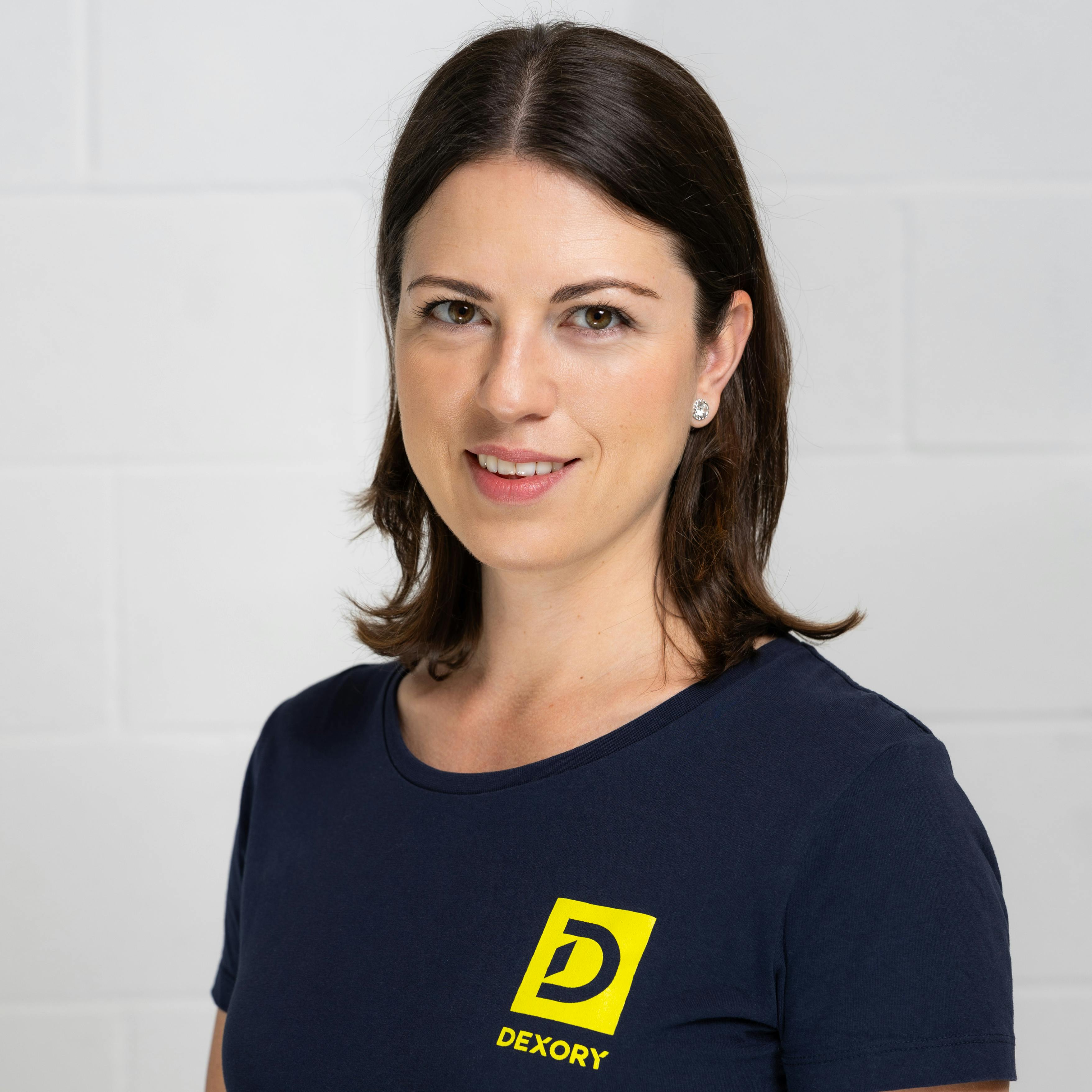
This coupled with strategic guidance as well as concrete go-to-market and operational experience can really unlock exponential growth. Last but foremost, founders tend to choose VCs who align to their companies’ vision but could be flexible enough to assist them in pivots should changing market conditions dictate. The key is choosing VCs who align with a company’s values and vision. A strong, collaborative relationship with VCs is vital for successfully managing the dynamic business landscape.
In this year's survey, we asked founders what they wish their investors had done differently since they entered into partnership.
The asks are quite simple. Founders want a relationship that works, with close and more proactive engagement, and one built on clear communication, transparency and trust.
They also value a shared mindset of embracing risk, being decisive and thinking in the long-term.
Support in securing customers by proactively helping with business development also comes across as high on the wishlist. Beyond these things, access to a community for networking and mentorship, as well as securing access to capital also featured frequently in founder feedback.

Europe is seeing more new tech startups being formed than any other region, supported by the strongest ever teams working on the most challenging and urgent problems. Europe has all the essential raw ingredients to become the next tech superpower. But for Europe to be able to shape the future of tech, the ecosystem needs to take further action to embrace the opportunity - and the risk that comes with it.
Europe's ability to fund and spur innovation has evolved considerably over the past decade. Nevertheless, a noticeable disparity with the US persists in terms of access to capital.
More European tech startups are formed each year, but over time, a growing gap emerges when it comes to their likelihood to secure external investment.
After five years, US tech startups are 40% more likely to have successfully secured venture capital funding. This is in spite of the fact that once companies secure an initial round of Seed investment, the probability of scaling to a billion-dollar valuation is the same in Europe as it is in the US.
This underlines the imperative for the European tech ecosystem to ensure that funding flows to European talent, giving them the firepower to compete globally and ensuring Europe can play a meaningful role in shaping the future.
To better understand what might lie ahead in 2024, and to get more of a sense of the expected volume of companies that will need to raise capital next year, we have looked historically at the companies that raised rounds in each year, and mapped out whether they went on to raise an additional round of investment.
Typically, 80% of companies that raised a funding round in any given year subsequently go on to raise another round of funding, whether those rounds are larger, flat, smaller, or of an undisclosed size.
Looking back at the rounds that were raised in the peak years of 2021 and 2022, there is clearly still a large overhang in terms of companies that have not yet raised subsequent rounds, at least as far as what's been publicly disclosed. In absolute terms, based on public information, this equates to approximately $55B of capital raised by companies in rounds that closed in 2021 and 2022 that should be expected to come back to market in 2024.
Also of note is the fact that a materially smaller proportion of subsequent rounds raised by the 2021 and 2022 cohorts of companies will result in larger rounds. For example, 64% of companies that raised a round in 2021 have so far raised a subsequent round. Of those subsequent rounds, just 30% have been larger than the prior one. For those companies that raised in 2022, just 18% of those subsequent rounds have been larger than a prior round raised in 2022.
The materiality of that shift is notable in that every other prior year, the equivalent number has typically been around 40% or higher.
By share of total capital invested in Europe per country, the UK has lost out the most over the last three years, while countries like France, the Netherlands, and Norway have gained.
The small but mighty Baltic state sees the highest number of funded startups per capita, and the most billion-dollar companies per capita.
As international investors retreat, local investors must step up to the plate, underscoring the significance of building a consistent source of European capital across all stages, and especially later ones.
The slowdown of capital invested in private European tech companies is evident across the region, with significant year-on-year declines recorded in every major European country between 2022 and 2023.
The region-wide impact of slowing investments means that the ranking of Europe's largest countries are largely unchanged compared to last year. The UK retains its top spot with a projected $12.7B of capital invested, followed by France ($8.0B) and Germany ($7.8B). This year, the Netherlands ($2.1B projected) has risen back into the top five countries, displacing Switzerland ($1.7B) to join Sweden ($1.7B) to round out the top five countries by capital invested in 2023.
Only a small number of countries bucked this trend - Lithuania, Romania, and Luxembourg are the only countries to have recorded a year-on-year increase in total capital invested in 2023.
As seen in regional investment volumes, at the country-level, early stage funding has proven far more resilient across countries, while significant declines in growth stage funding rounds account for most of the decline in total capital invested.
This year's survey reveals a largely positive bend to industry sentiment, with around half of respondents registering a more optimistic outlook for the future of European technology compared to 12 months ago. This is approximately double the share of respondents who reported a waning sense of optimism over the past year.
Looking at how sentiment compares across countries, the picture is broadly aligned. In every country, the share of respondents with a positive outlook far outweighs the share that reported a negative change over the past 12 months. Nevertheless, around a quarter of respondents in all countries do say they are now less optimistic compared to this time last year.
There are certain countries that stand out as particularly positive amongst survey respondents. 57% of respondents based in Poland are more positive about the future, the highest share of any individual country and a huge leap from last year. Similarly, 50% or more of respondents from Portugal, Spain, and Norway also reported improved sentiment over the past 12 months.

Furthermore, the nation's oil-generated wealth has heightened awareness about the urgent need for energy transition, mobilizing both talent and resources toward sustainable tech solutions.
The emergence of flourishing local tech ecosystems across the region has been a key theme in the growth of European tech in recent years, with capital flows broadening and a shifting distribution in the share of total capital invested by country. So while the UK is - and continues to be - the largest hub in absolute terms, when it comes to capital invested, it has been gradually losing 'market share' on the European level.
This chart highlights the biggest gains and falls by country, as measured by a change in their share of total capital invested in Europe. To avoid over-indexing on a single year, this compares a country's share of total capital invested over the past three years (2021-2023) against the same country's share in the three preceding years (2018-2020).
On this basis, it's clear that the UK, Sweden, and Finland have seen the largest erosion of their relative share of European funding, while the Netherlands, Norway and Estonia are amongst the countries that have captured the biggest gains.
We have also included a straightforward comparison of the change in the distribution of capital invested by country in 2023 versus 2019. The risers and fallers look very similar across the two charts, though this perspective catapults France to the top of the 'gainers'. The UK remains the biggest net loser.
On a GDP-adjusted basis, Europe continues to lag behind in terms of its share of total capital invested globally in technology. Europe, as defined by the 50 countries included in the State of European Tech report, accounts for 21% of global GDP. By comparison, the projected total of $45B of capital invested in the region will equate to around 18% of global investment volumes. By comparison, the US accounts for 25% of global GDP, but a massive 46% share of total capital invested.
Looking at a sub-regional level, the UK & Ireland's share of GDP and total global investment volumes are broadly aligned at around 4% each. Every other sub-region, however, records underperformance in terms of investment volumes if adjusted to their relative share of global GDP. The gap is particularly pronounced for Southern Europe and Central and Eastern Europe.
Slicing the data on a per-country basis helps to identify the biggest opportunities to close the gap. In both Germany and Italy, for example, there is still a gap of more than two percentage points to catch up between their respective shares of global GDP and global private tech investment.
One proxy for the relative scale of startup ecosystems across Europe is the absolute count of startups and scaleups that have received different levels of external capital investment. This does not, of course, tell the full story, as there are many exceptional startups that choose never to raise any external funding, but it is still a useful measure of the relative depth and maturity of tech ecosystems across the region.
Unsurprisingly, the countries that have the largest absolute investment volumes also have the highest number of funded companies. The UK leads with almost 13,000 funded tech companies in total, and has the largest count of companies across all buckets of total capital raised.
The number of funded startups in the UK, France, and Germany (around 23,000) is greater than the total for the rest of Europe combined (around 21,600).
The data is also helpful to better understand the relative distribution of funded companies, according to how much capital they have raised. The vast majority of funded companies (76%) have raised less than $5M in total. This also reveals interesting comparisons between countries in terms of the relative number of companies across the different levels of funding raised. Italy, for example, has a similar number of early stage startups that have raised less then $5M in funding compared to the Netherlands, but far fewer larger-scale companies that have raised $50M or more.

These role models are more than just businesses; they are proof points of a thriving ecosystem that’s attracting a surge of early stage capital, both from within our borders and beyond. The fundamentals driving this momentum are robust—a cost-effective living standard combined with a deep talent pool from world-class universities, a vibrant expat community and strong public policy initiatives. This is fostering a landscape where Spanish startups not only start but stay to scale up. The increase in investment is a clear indicator of confidence in the Spanish market, and as these investments grow, they fuel the continuous cycle of innovation and success, propelling the Spanish tech sector forward.
The universe of funded companies is one useful measure of the scale of Europe's tech ecosystem, but a more comprehensive picture must also include the full universe of active tech startups, irrespective of whether they have raised venture capital.
This expands the tech startup universe by a factor of more than 10x from 45,000 to around 600,000 companies across the region. This also serves to highlight just how few tech startups (just 7.5% of all tech startups) actually embark upon the venture capital funding journey, whether voluntarily or involuntarily.
Inevitably, any measure of startup activity in absolute terms will be dominated by the largest countries by population and GDP. We therefore adjust for the size of the country to draw comparisons that benchmark the relative level of startup activity. Here, the density of funded startups is adjusted for population to identify countries with the highest density of funded startups per capita.
On this basis, smaller countries with active startup ecosystems rise to the top. Estonia, as in prior years of producing this analysis, takes the top spot. This also serves to highlight the fact that many large countries, such as Germany, Italy, and Spain, have significant room for growth if they want to compare more favourably with countries that have succeeded in creating a greater relative density of funded startups, on a population-adjusted basis.

Any tech project in Estonia always begins with the scrappy lens of "how can we get ALL THIS done with 3 people?" You can never build a massive company on a local market of a million people, which means every founder is forced to think global from day one. When all founders look outside of Estonia, their backs are together: we have the most supportive community of peers anywhere.
The global retraction in investment volumes has a knock-on effect on the flow of capital between regions. This becomes most evident when looking at the capital contribution of US-based investors into European tech companies.
At the peak in 2021, each dollar invested by European investors was matched by 66 cents from the US. This measure has shrunk each year for the past two years, bottoming out at 33 cents in 2023, down 48% vs. 2021. Not surprisingly, this retraction has been felt most acutely by later-stage founders raising larger rounds.
This material decline is driven not only by a declining share of rounds that have any US investor participation at all, but also by a reduction in the average count of US investors participating in any given round. In other words, 2023 has seen a significant reduction in the count of large rounds that involved the participation of multiple US investors in the same round.
The impact of this relative decline of US capital invested into European tech companies differs by country. Looking at the four largest European markets by overall investment volumes, there is a clear pattern of increases in the relative volume of US capital invested leading up to the peak in 2021, followed by two subsequent years of decline.
What is notable, however, is that the relative weight of US investment to European investment differs quite significantly between these countries. At the peak in 2021, every dollar invested into either a UK or German tech company by a European investor was matched by US investors to the tune of 86 cents in the UK and as much as 93 cents in Germany. By comparison, the equivalent number for French tech companies was around half, at 43 cents.
As a consequence of reduced US investor activity, the role of European investors has taken on even greater prominence in the past year, underscoring the significance of building a consistent and dedicated source of European capital across all stages, and especially at later stages. At the Growth stages, for example, the share of total capital invested by US investors has fallen from a peak of 39% in 2021 to just 25% in 2023. The declining share is also evident among Asian investors, whose share of total capital invested has declined from 11% in 2021 to 7% in 2023.
This shifting mix of geographic sources are less of an issue at the earlier stage, since European startups primarily attract initial rounds from domestic or pan-regional investors within the European ecosystem. In fact, investors in Europe - both domestic and cross-border players - contribute to approximately 80% of the total capital invested in European tech companies during early stage funding rounds, a share that has stayed broadly consistent over the past five years.
The number of countries that have produced a breakout, billion-dollar company is one of the clearest indicators of tech entrepreneurship and the diversity of Europe's startup ecosystems. Today, a total of 356 companies are currently valued in excess of $1B, and they have been started and scaled from 29 countries and 136 cities.
This includes not only countries that have only produced a single billion-dollar company to date (including Bulgaria, Latvia, and Slovenia), but also eight countries that have more than 10 current billion-dollar companies, led by the UK (105), Germany (54), and France (37).
Unsurprisingly, the market reset has also resulted in a growing number of $B+ companies being 'dehorned', meaning they have seen their valuation fall to under a billion dollars. This year, at least 50 companies have been "dehorned" to date, either via down rounds, share price compression, or by going out of business entirely.
This creates challenging times for companies, their founders, employees, and investors, but is also a natural feature of the startup and scaleup lifecycle.

Many of the first-generation successful startups in Europe from the last decade have spawned new hubs of early staged founders and builders. Moreover, the rise of remote work has distributed talent and opportunity to new geographies, spurring new hotbeds of innovation across the EU. The confluence of these forces has created an environment of sustained and rational optimism, and we're excited to continue supporting Europe's thriving tech ecosystem at the earliest stages of company formation.
The emergence of billion-dollar companies is a simple but useful measure of startup success. It is also an indicator of a country's ability to foster innovation and create a supportive environment for the development of high-growth startups.
The number of billion-dollar companies can therefore be used to benchmark progress, especially if normalised on a per capita basis to adjust for different country populations. On this measure, as it has done for years, Estonia continues to stand out as the leader in billion-dollar company density, with 4.5 companies valued at over $1B per every one million inhabitants.
Of course, a small population can help boost per capita measures. Similar to Estonia, other smaller countries such as Sweden (2.4 $B+ companies per 1M inhabitants), Malta (2.0), and Norway (2.1) are all punching above their weight. Nevertheless, the UK's strong startup scene is reflected in the amount of $B+ companies per capita too, ranking way above the European average of 0.9 with 1.6 $B+ companies per 1M residents.
As highlighted in the Executive Summary, the meteoric rise of tech entrepreneurship in Europe has resulted in the number of new tech startups founded each year in Europe exceeding that in the US for each of the past five years. On average, around 15,200 new tech startups have been founded per year in Europe, compared to 13,700 in the US.
But which countries are the biggest contributors to tech startup formation across Europe? And which countries, if any, are seeing their share of tech startups being founded faster, in relative terms, than those across the rest of the region?
The UK leads the way in terms of the number of tech startups founded each year, accounting for approximately a quarter of all new companies each year in Europe. The fastest-rising country in terms of share of new tech startups created each year is France, which has seen its share increase from 18% in 2019 to 22% in 2023.
While the top 10 countries account for a significant percentage of total tech startup creation each year (83% in 2023), a meaningful share of new tech startups (17%) are being started away from these more established clusters of startup activity.

We have a deep and growing conviction in the long-term importance of New Palo Alto as a global hub for values-based innovation, leading to strong levels of investment in areas including climate tech, healthcare and deep tech. 22 of the world’s leading universities are in New Palo Alto, 35 in Europe overall. The UK specifically is demonstrably punching well above its weight in terms of capital efficiency to produce breakout companies, with the UK government showing global leadership around topics such as responsible innovation and AI, and the availability of scale-up capital by tackling long-term structural issues to paving the way for pension funds to deepen their exposure into venture capital assets.
The distribution of ecosystem values varies by region, but in the past five years, has stayed quite stable.
UK & Ireland is home to the largest share of private tech, capturing 33% of the European ecosystem value.
France & Benelux take home 22%, largely thanks to their significant public market value and the Netherlands being home to ASML, the largest European listed tech company. SAP in Germany is the next biggest public tech giant in Europe, boosting DACH into third place with 21%.
Together, these three regions capture 76% of the combined ecosystem value in 2023, again underscoring the prevailing disparities across different parts of Europe. That said, the rest of Europe has done some catching up, increasing their share of the pie from 17% in 2019 to 24% in 2023.
Not surprisingly, given the relative maturity of their tech ecosystems and deeper pools of local talent, capital, and more established public markets, countries like the UK, Germany, the Netherlands, and Sweden have secured the highest count of $B+ exits to date. These exits, of course, are critical for the continued growth and development of local ecosystems due to the flywheel effect that is unleashed through the subsequent recycling of capital and talent.
Critically, given the importance of companies successfully going through the full lifecycle from inception to a billion-dollar liquidity event, it's of note that billion-dollar exits have now been realised in 22 different countries across the region, including 18 countries that have seen this milestone surpassed on more than one occasion. Great companies truly come from anywhere in Europe.
Climate / sustainability was not only one of the top themes among new startups, but also the sector that attracted the most investment, overtaking the usual suspects of Finance & Insurance and Software.
AI was the most popular sector for rounds of less than $5M, as more and more companies have popped up to capitalise on the wave of innovation spurred on by breakthroughs in large language models (LLMs).
The top themes that new joiners are attracted to are climate / sustainability and health, showing Europe’s dedication to solving societal problems.
Creating a taxonomy is a hard task, and far from an exact science. However, we aim to find maximum alignment between our taxonomy and the real problems companies are solving.
The following chapter leverages a collection of models that map companies and startups to a taxonomy of 12 high-level sectors as well as 75+ building-block themes.
More specifically, sectors are where companies would fit in a description of a country’s economic industries, for example, Education or Health. A company can only have one sector but might have multiple themes. Themes are more specific expressions of the company's offer, that they might use in their self-description or a pitch. Examples we map include DevOps, Digital Care, Electric Vehicles or Sustainability.
These help us speak a common language when analysing the thematic flow of talent and capital within the European tech ecosystem.
The Carbon & Energy sector, which encompasses climate tech, accounts for 27% of all capital invested in European tech in 2023, more than doubling its share of investment since 2021.
This has seen the sector overtake Finance & Insurance, as well as Software as the single largest sector by capital raised. This not only represents a dramatic increase in the scale of capital invested behind the green transition, but also a clear slowdown in fintech investment volumes since the peak of the market.
At a country level, investment trends also show a high degree of sector diversity. The dominance of capital flows into the Carbon & Energy sector, notably, is present across almost every major European country. This sector captured a particularly high share of capital invested in the Nordics, representing 48% of all capital invested in Norway and 44% in Sweden. In Denmark and Switzerland, however, Health is the single largest investment sector of 2023, representing 39% and 38% of total capital invested, respectively.
The large overall decline in total investment volumes means that to measure the relative growth of different sectors over time, the change in share of overall investment per sector is the most useful metric.
Comparing the sector-level distribution of capital in 2023 vs. 2022 in this way highlights the large increase in the overall share of capital invested in the Carbon & Energy sector, representing a share gain of over 19 percentage points. This year has also seen a large share gain of capital investment into Enabling Technologies, which includes core technology such as AI Infrastructure, Quantum Computing, and Semiconductors. The Health sector is the only other sector that captured a meaningful relative gain in share of investment, up over three percentage points in 2023 vs. the prior year.
The Finance & Insurance sector accounted for the largest overall year-on-year declines in share of investment, representing a loss of almost 10 percentage points of share of capital invested. This was followed by the Software sector, which saw a drop of eight percentage points in its 2023 share of investment vs. 2022 levels.

With European companies investing heavily in groundbreaking climate tech, circular economy solutions and more, Vaayu is placed in a unique strategic position to help tackle climate change head-on and help other businesses lower their impact. Its strong commitment to sustainability, an increasingly supportive regulatory environment and historical experience in green technologies uniquely position European tech to play a crucial role in addressing climate-related challenges.
An analysis of the flow of earliest-stage investment by sector provides a useful forward-looking indicator of the sectors most likely to dominate future later-stage investment.
Looking at the distribution of sub-$5M rounds - which provide a general proxy for Pre-Seed and Seed investment trends - Software, Carbon & Energy, and Health are the top three most important sectors for early stage investment in 2023, followed by Enabling Technologies and Digital Infrastructure.
This chart also highlights the outsized share of investment into the Carbon & Energy sector in later rounds, which captured 28% of all capital invested in rounds of $5M or more.
Peeling one layer below sectors, let’s have a closer look at the themes driving funding this year.
Unsurprisingly, the big one is the rise of AI, with more and more companies popping up to capitalise on the wave of innovation we're seeing from large language models (LLMs). Out of all funding, companies that fall under the AI theme captured just under 11%. Winding the clocks back to 2019, some might not be surprised to see AI also topping the charts. The theme has benefitted from consistent flows of funding over many years and is now bearing fruit, with many growth stage companies raising sizeable rounds in Europe this year.

For Europe to compete on the global stage and build businesses as valuable as the US and China, we must excel not only in software but in pioneering hardware too. If we in Europe want to shape the future of healthcare, we must have companies in our region who are creating that future. Our ambition must match our capability to innovate and integrate, to truly influence the healthcare of tomorrow.
Looking more closely at the most popular sectors at the earliest stages, we see other key trends starting to take off for Seed investments. Unsurprisingly, the most notable one is the rise of AI, with a huge number of companies popping up to capitalise on the wave of innovation ignited by breakthroughs in large language models (LLMs). This has catapulted AI/ML to the top of the charts as the number one earliest-stage category, as ranked by the count of rounds of investment of $5M or less.
Though things are certainly incredibly active at the earliest stages in AI, Europe already has a growing and maturing ecosystem of growth stage companies with AI at their core.

The share of investment allocated to European deep tech companies - an umbrella category for companies that apply breakthroughs in science and engineering to come up with novel products and services - reached a record-breaking 44% of total capital invested in 2023, up from just 15% of total investment volume a decade ago.
Deep tech investment has, in fact, bucked the overall slowdown in absolute investment volumes in Europe. It looks set to surpass last year's total, and is coming close to parity with the record sum invested in 2021.
The biggest drivers of robust deep tech investment have been the tailwinds behind investment in breakthrough technology addressing the Carbon & Energy sector, and the strong trend of investment into European AI companies in 2023. The overall strength of deep tech investment reflects Europe's solid bedrock of academic and research institutions and its robust pool of technical talent.

Deep Tech, or Frontier Tech, is fundamentally new science and engineering making its way into companies and products for the first time. Historically, we can think of Edison commercializing the light bulb with GE, Carl Benz building the first car at Mercedes-Benz, or Steve Jobs at Apple launching Lisa, the first computer that used a graphical user interface. These Deep Tech founders created some of the largest companies in history, many of which have become core platforms and critical infrastructure for societies today. In 2023, as highlighted in the Europe DeepTech report, the frontier has shifted, and DeepTechstart-ups are tackling new challenges. Novel Energy such as fusion and new battery chemistries, access to space and the deployment of new astral infrastructure, new breakthroughs in AI and computational biology, and computing technologies including photonics, decentralized networks, and quantum. These companies stand to become the next giants, but to get there, they will need to overcome large gaps in growth stage funding, the urgent need for dispersed European talent to aggregate in dense hubs, and intense competition from the US and China.
The fact that AI is flourishing under the radar in Europe should not be a surprise. Europe has a strong technical talent pool, owing its strength to world-class scientific and technical institutions and the depth of its engineering talent.
This strength extends into the field of AI. Over the past decade, Europe has not only witnessed a greater than 10x increase in the number of people working in AI roles, but also claims a larger resident population of highly-skilled AI professionals compared to the US.
Of course, many of these AI professionals are working in roles at US-headquartered technology companies that have built a large AI research presence in Europe, such as Alphabet or Meta. But as Mistral AI - a company founded by European former leading AI researchers at Meta and DeepMind - demonstrates, these European-based pools of AI talent have become an incredibly rich breeding ground for the founders and talent behind the next generation of European AI companies.
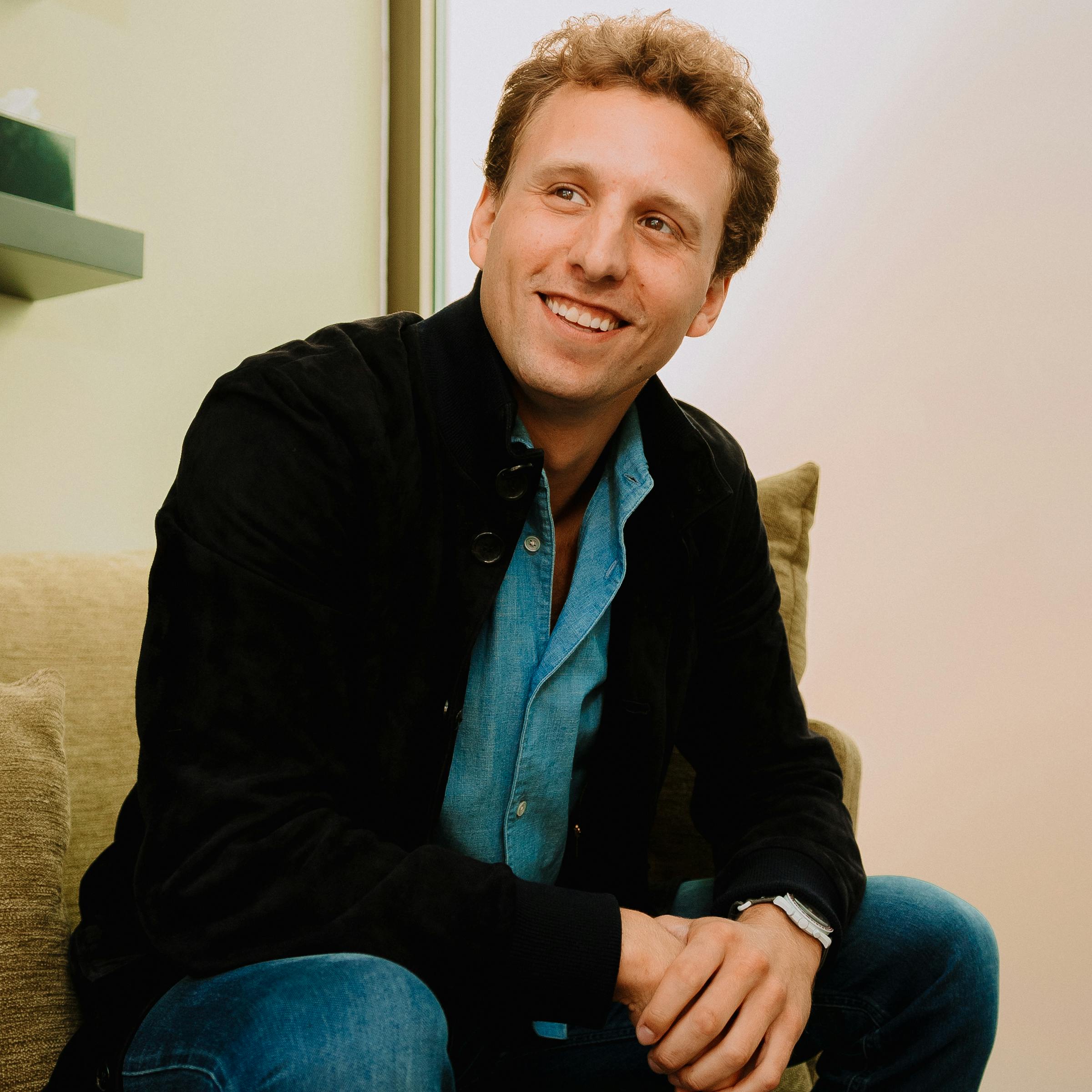
Europe's concentration of dedicated AI practitioners relative to its overall talent pool is 30% higher than in the US. This workforce is also highly educated, with 70% holding a Masters or PhD. Founders here can access the specialist skills they need to build and this talent’s not just in established hubs like London, Paris or Berlin - our research identified spikes of outlier talent in AI in Dublin, Zurich, Athens and Edinburgh to name just a few.
AI has been at the heart of manifold discussions in the industry - and beyond - in 2023. Its elevation in public discourse, however, belies the fact that AI has been at the core of so many companies and so much investment since well before the last decade. Generative AI, which has captured so much attention in 2023, is of course just a specific branch of the much broader, overarching field of AI.
Investment into AI in Europe is defying the broader downturn, with 2023 total investment on track to come close to, or perhaps even surpass, last year's record-breaking amount of $8.7B.
While investment into AI in Europe has grown massively over a 10-year period, total investment volumes are a long way off the levels seen in the US. Over the past five years, almost $35B has been invested into European AI companies, compared to more than $130B in US AI companies. While Europe is now consistently seeing rounds of investment of $100M or more, and even up to $0.5B, this pales in comparison with Microsoft's $10B investment into OpenAI.
The difference in scale in absolute investment volume into AI companies in the US and Europe is largely a function of greater scale and frequency of growth stage activity.
At the growth stage, Europe has an 16% share of total AI / ML capital invested in 2023. This is a small, but notable increase in share from 10% in 2014.
By comparison, at the early stage, Europe has an 33% share of total AI / ML capital invested in 2023. Again, this share has climbed consistently over time as Europe's tech and AI ecosystem has matured. In 2014, for example, Europe's early stage share was just 16%.
This underlines the fact that early stage activity in AI has expanded significantly in Europe, growing faster in relative terms than the US. But, there is unquestionably more work to do in order to scale up these companies successfully and to build a growth stage environment that enables access to deeper pools of capital.

This means building out public cloud capacity for startups, pushing universities to end their feudal spinout policies, and making it easier for people to establish venture funds. The big danger for Europe lies in giving in to its interventionist impulse. Regulating AI isn’t like regulating Airbus. Governments attempting to ‘guide innovation’ through large-scale legislation will slow down progress while empowering a small clique of US tech companies. Europe should avoid treating AI as distinct from any other tool or technology and instead take a cool-headed, context-dependent approach to assessing risk.
There has been no shortage of perspectives on Europe's position in the AI race. Amidst the noise, it is easy to overlook the fact that the AI theme has actually hit a stride in Europe in recent years, with European AI companies consistently securing mega-rounds of $100M or more. In fact, this year will come close to matching the record set in 2021, despite the huge headwind of a steep drop in overall investment levels in Europe in 2023.
As of the end of Q3 2023, European AI companies had raised 11 rounds of $100M or more, compared to 37 rounds by US AI companies over the same period. So far, however, European AI companies have not yet raised the type of billion-dollar or multi-billion-dollar rounds that have become crucial sources of firepower for the most important and fastest-growing US AI companies, like OpenAI or Anthropic. The multi-$100M+ rounds, however, are certainly beginning to appear in Europe.
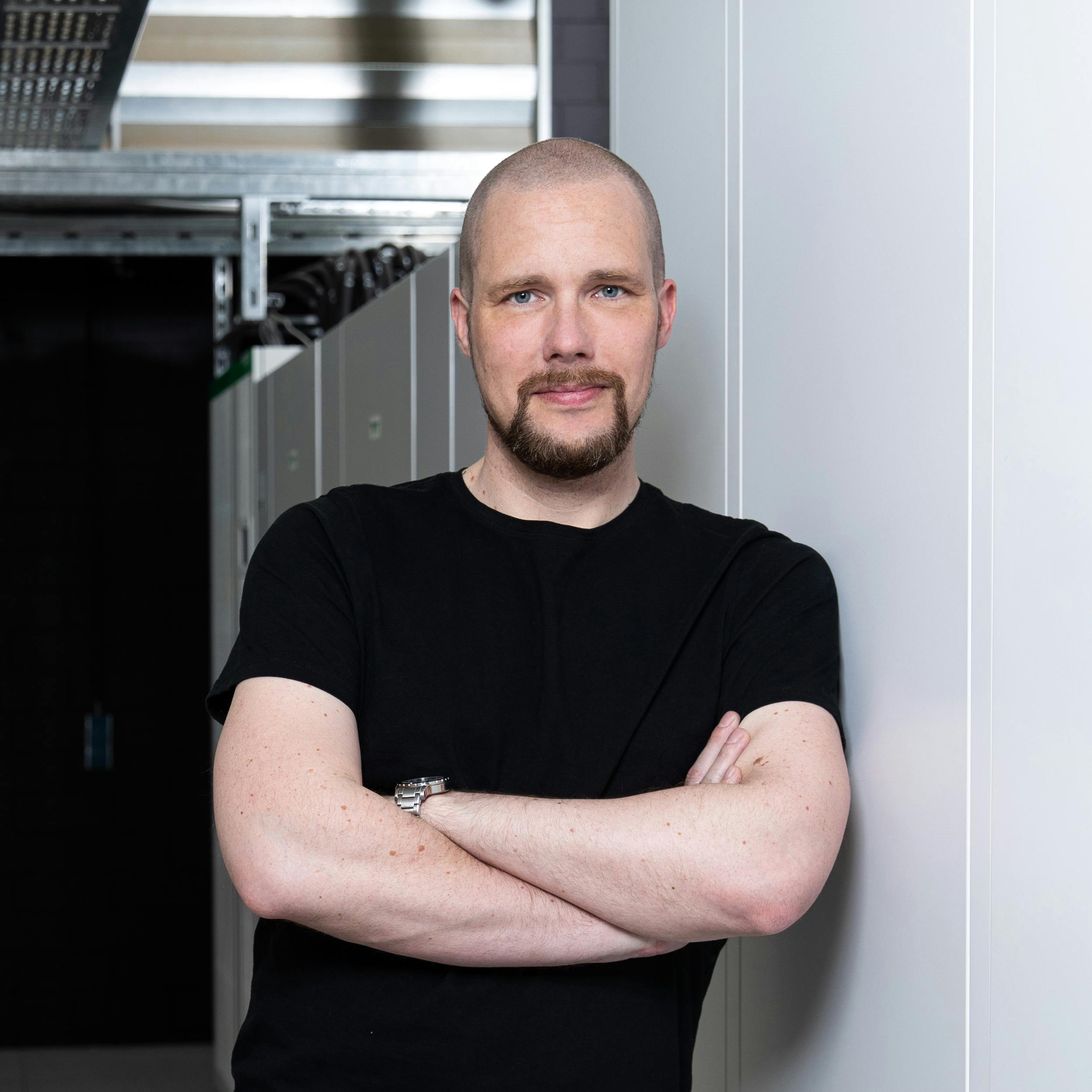
Of course, someone has to pay for the compute and all the talent. But the thing that will help us survive in the upper echelons of generative AI is also the partnerships and our partners are phenomenal. They understand that this is a unique, once in a generation opportunity to build something meaningful.
The rank of the largest rounds raised by European AI companies in 2023 highlights the strength of investor interest in supporting the up-and-coming generation of potential European AI champions. Notably, this list includes three rounds in excess of half a billion dollars each, including German foundational model company, Aleph Alpha's most recent $500M Series C round. The list is also notable for the presence of both 'pure' AI companies, such as Mistral and Aleph Alpha, as well as 'applied AI' companies that are bringing AI innovation to industries as diverse as defence (Helsing AI) and mobility (Conigital). The question to ask now is when will Europe start to see billion-dollar rounds that match the scale of capital being invested into US AI leaders?

HQ: United Kingdom
$528M Series A (combined equity and debt)

HQ: Germany
$500M Series C (combined equity and grant)

HQ: United Kingdom
$250M Series D

HQ: Germany
$222M Series B
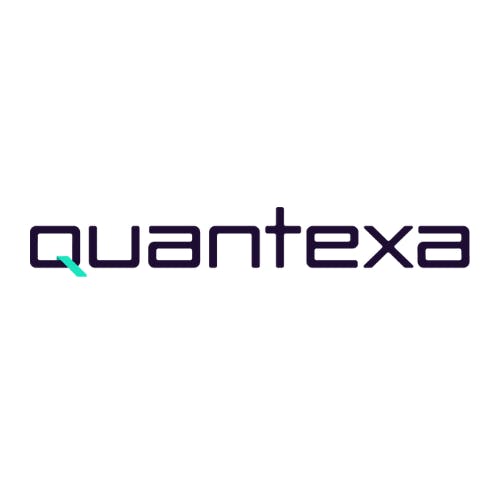
HQ: United Kingdom
$129M Series E
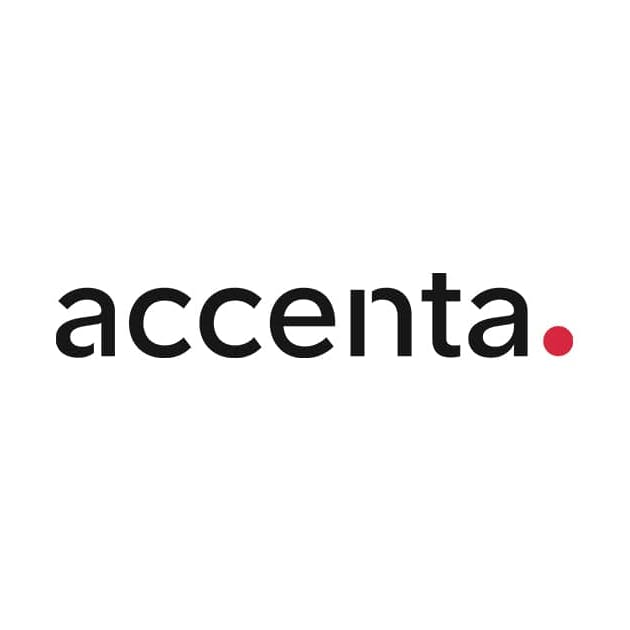
HQ: France
$116M Series A

HQ: France
$113M Seed

HQ: Germany
$108M Series B
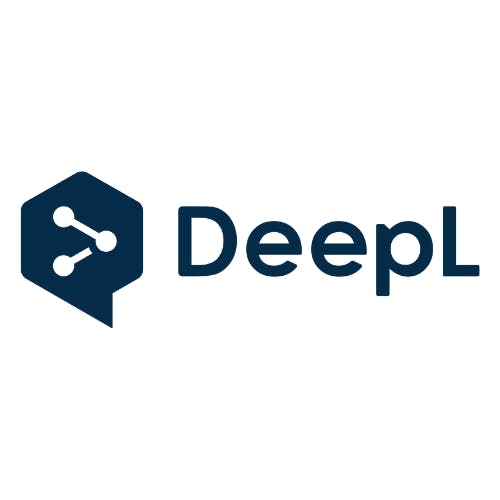
HQ: Germany
$100M Series B

HQ: United Kingdom
$89M Series C
As well as large-scale investment into core AI infrastructure and models, capital invested into AI is supporting its application across a broad range of sectors and themes. Vertical-specific applications of AI, for example, within the Carbon & Energy and Health sectors, account for just over one third (38%) of total capital invested in 2023.

The most remarkable subset within the AI space this year has undoubtedly been Generative AI.
Generative AI companies focus on developing and applying artificial intelligence technologies, particularly machine learning techniques, to generate new content, data, or media. This category features companies like Mistral AI and Aleph Alpha in Europe, alongside OpenAI (the makers of ChatGPT) and Inflection AI in the United States.
While Generative AI companies may represent a relatively small fraction of overall tech fundraising activity on an absolute count basis, they have swiftly had an outsized impact on workflows, regulatory discourse, and society at large.
What is also notable is that whilst generative AI companies have leapt into the public consciousness in 2023, they have been quietly being started and funded in greater numbers for many years, both in Europe and the US.
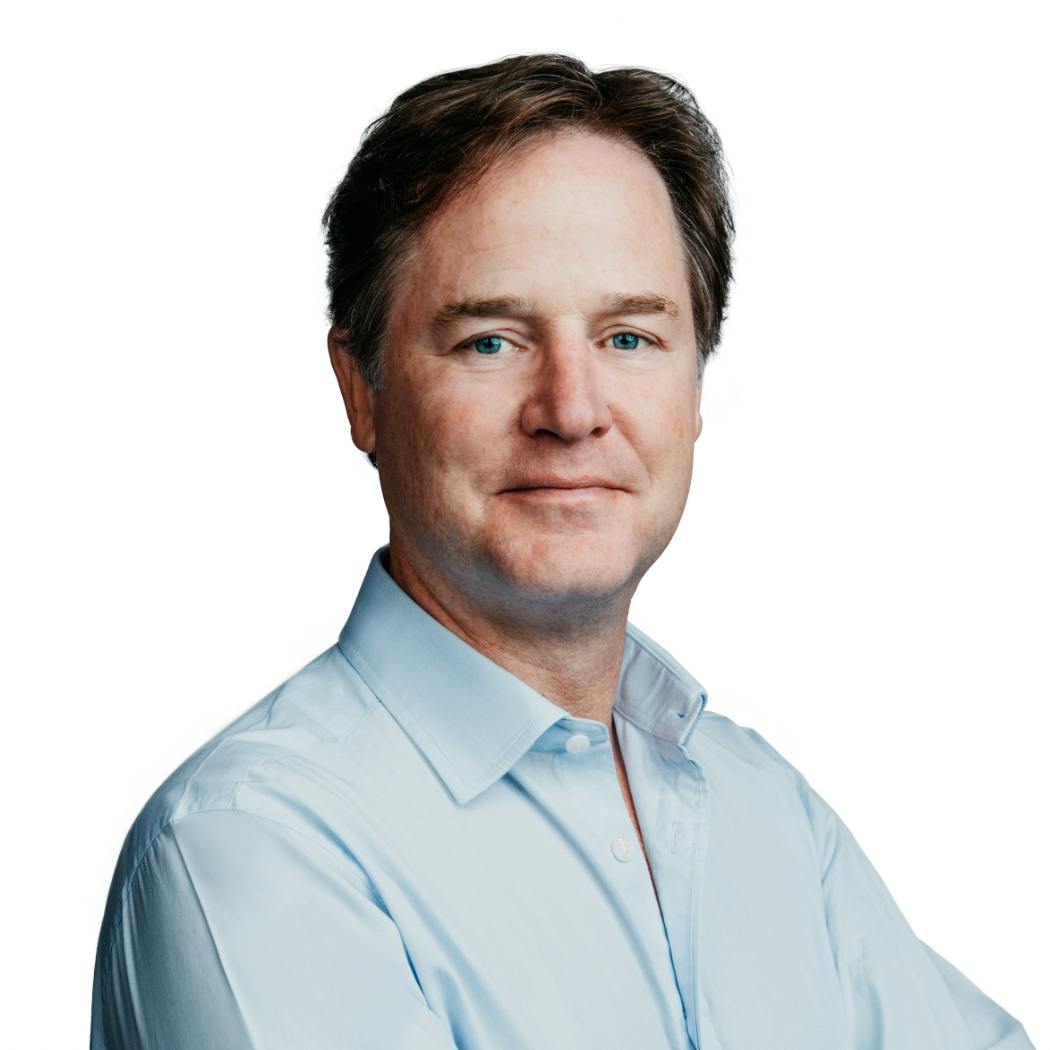
Next year, several of the world’s largest democracies will go to the polls. Policymakers must make sure AI’s potential impact here isn’t overlooked in pursuit of discussions on speculative risk.
Generative AI companies had seen a relatively slow and steady influx of funding since 2019, reaching peaks in 2022 of $2B invested in the United States and $0.5B invested in Europe. Then OpenAI happened. With a whopping $10B of investment raised in a single round, OpenAI's latest round skyrocketed the theme's total funding in US in 2023 to $16B. An extreme example of the impact one or two outlier companies can have on the ecosystem.
As the most important emerging branch of AI, Generative AI has not only captured the world's attention, but it has also captured a significant share of overall AI investment too.
The share of AI investment specifically allocated to Generative AI companies has taken a major step forward in Europe, hitting 11% in 2023, but a giant leap in the US, where Generative AI now accounts for more than half (60%) of all AI investment.
This year's survey checked the pulse on European tech industry sentiment towards the region's ability to build global AI leaders - a question that yielded interesting results. Overall, half the industry is confident that Europe will be able to produce a generation of AI category-leading companies. But this confidence certainly does not extend to all, with 28% of respondents sharing a more pessimistic outlook in their responses. Interestingly, Europe's founders were slightly less likely to take an optimistic view versus other respondent types.
It’s one thing to have great talent, but are they working on the hardest problems?
Here, we look at the flow of talent into and within the tech industry, broken down by theme. This helps us to quantify talent flows and identify the sectors drawing in top talent, whether they are completely new to the tech industry or moving jobs within it.
Sustainability and health take the #1 and #2 spots, clearly reflecting the powerful magnetic effect of purpose-led companies in attracting talent.
Addressing sustainability and climate challenges have become core themes of the European tech ecosystem in recent years, increasing their share of total funding consistently over the past decade. This year's report tracks all companies that label themselves as operating within one of the themes we categorise as directly addressing sustainability or climate, such as Electric Vehicles or Carbon Markets.
As also reported in previous editions of the State of European Tech, Europe has taken centre stage in funding purpose-driven tech. The increase in funding captured this year is also representative of the maturing of these themes, as more growth stage companies capture larger rounds of funding.
The Sustainability / Climate theme has matured to an extent that it is now a cross-cutting trend that is transforming a very wide range of sectors. Looking at the distribution of capital invested in 2023, the largest flows of capital under this theme went to the Transportation, Energy, Manufacturing and Carbon sectors. Transportation alone accounted for a third (33%) of all capital invested under the Sustainability / Climate theme in European tech in 2023, followed by Energy (24%).


To nurture and scale the early stage climate ecosystem, Europe must elevate its ambition on policy and legislation, innovate on available capital stacks (from the existing valleys of death in startup funding to its growth capital) and make it much easier for startups to do business, across the continent.
Most would agree that a key priority for the next decade is to achieve a sustainable future for all. But it's impossible to manage what cannot be measured.
Through a collaboration with Dealroom.co, dating back to 2019, we have been able to quantify the investment into purpose-driven companies, helping us measure progress year-on-year. Under purpose-driven investing, we capture all companies addressing at least one of the United Nations' 17 defined Sustainable Development Goals (SDGs).
Europe's global leadership in purpose-driven investment is now clear. This year, Europe's global share of total capital invested in purpose-driven tech companies leapfrogged the US, taking 41% of worldwide capital invested. Prior to 2023, Europe's share had consistently landed at around a quarter of global investment, so this year represents a significant jump.
Europe's lead on a total capital invested basis now mirrors its longstanding leadership in early stage investment. Looking at rounds of $5M or less, a proxy for the Pre-Seed and Seed investment stages, Europe now commands 66% of all capital invested in purpose-driven tech companies globally, maintaining its long-running global market leadership.
Gender diversity issues prevail also at the funding, or venture capital firm, level. When looking at the gender mix of General Partners (GPs), the most senior decision-makers in a venture firm, women make up a small minority.
Studies have shown that women VCs are more likely to allocate capital to women-led teams. Hence, an increase in women GPs might ultimately have a positive impact on the share of funding going to mixed and women-only founding teams.
of GPs are female
Europe's AI talent base has grown rapidly over the past decade, growing more than 10x to a pool of over 120,000 highly-skilled professionals actively employed in AI roles, a number that just exceeds the US.
Active AI roles in Europe
The difference in scale of the funding going to US AI leaders is emphasised by a simple comparison of the total amount raised across the top 10 largest AI rounds raised in 2023 in Europe vs. the US. While Europe's largest AI rounds totalled an impressive $2.5B, this is dwarfed by the more than $14.2B raised across the top 10 largest rounds in the US this year.

